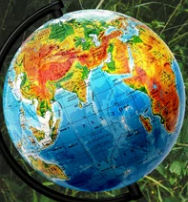 |
| computer science |
The Moon Phase Soulmate Calculator is a tool that harnesses the power of lunar cycles to help individuals find their ideal partner. By understanding the importance of moon phases and their influence on human emotions and relationships, this calculator offers insight into compatibility and potential soulmate connections. Read this: https://www.healthtours.fr/10-signes-quun-proche-decede-attempt-de-vous-transmit-un-message/
Understanding Lunar Phases and Relationships:
The Moon Phase Soulmate Calculator is based on computer science and the principle that the phases of the moon can influence human behavior and emotions, including in matters of the heart. Each phase of the moon—from new moon to full moon and everything in between—is believed to have a unique energy that can influence how we connect with others on an emotional and spiritual level. Here is another in-depth content on an important topic.
How does the Calculator work?
The Moon Phase Soulmate Calculator analyzes the positions of the moon and other celestial bodies at the time of your birth to determine your personality based on the moon phase and your compatibility with potential partners. By entering your date of birth, time and place of birth, the calculator generates personalized insights into your relationship tendencies and your soulmate connections based on lunar influences:
Interpret Results and Compatibility:
Once you have received your results from the Moon Phase Soulmate Calculator, it is essential to interpret them in the context of your own experiences and desires. The calculator can reveal compatibility with certain lunar phases or alignments, indicating potential areas of harmony or tension in relationships. Understanding these insights can help you navigate romantic connections with greater awareness and insight. Discover this article by clicking here.
Harnessing Lunar Energy for Love:
For those who believe in the astrology power and lunar cycles, the Moon Phase Soulmate Calculator offers a unique opportunity to harness cosmic energy in the search for love and companionship. By aligning with the natural rhythms of the moon, individuals can cultivate deeper connections with themselves and others, fostering meaningful relationships based on shared understanding and compatibility. Visit this document extract.
(to be continued)

















